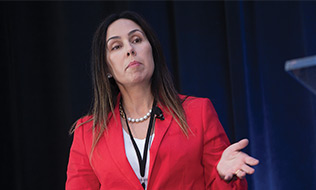
With diabetes on the rise, how well employees manage the chronic disease should be a concern for employers, Diana Sherifali, an associate professor at McMaster University’s school of nursing, told Benefits Canada‘s 2018 Healthy Outcomes conference in May.
Since diabetes often comes with other chronic conditions like cardiovascular disease, hypertension and high cholesterol, mitigating it is all the more necessary, she said. In addition, the stress of dealing with the condition can become extreme to the point of being a precursor to moderate depression, she added.
Self-management techniques, education and support are becoming more officially recognized factors in diabetes care, according to Sherifali. “Now, more than ever, we have more tools, devices, resources to help us understand how we inspire healthy behaviours in our patients. What are the tools? Literally tools: apps, Fitbit devices, whatever it might be,” she said.
Read: CAA shares journey to a healthy workplace
Health coaching specific to diabetes could be one approach, Sherifali suggested. Traditionally focusing on therapeutic relationships, communication skills and motivational interviewing, the process ideally inspires healthy lifestyle changes.
Her initial research on the coaching model has found it to be as effective at managing glucose levels as medication. “If someone had access to a diabetes coach for a year, it was almost equivalent to having a drug,” she said.
In a further community-based trial, Sherifali led research in which coaches made weekly calls to participants for six months. They then scaled back the calls to monthly intervals for the next six months.
Read: Employers urged to boost tracking of obesity efforts
In particular, the study focused on tiny habits. “Rather than breaking or changing habits or behaviours that currently exist, our focus is to build small, positive, tiny habits that lead them to the ultimate goal,” said Sherifali.
The researchers discovered that contacting subjects during the workday wasn’t disruptive. “A lot of people protected that time,” she said. “So they use break time, whatever they had, to just slip away to touch base with the coach once a week [through] what we call low-dose contact, frequent contact, anticipated contact.” The consistent contact minimized the need to visit doctors or the emergency room, which in turn reduced lost productivity, she added.
Read more coverage from the 2018 Healthy Outcomes conference.
